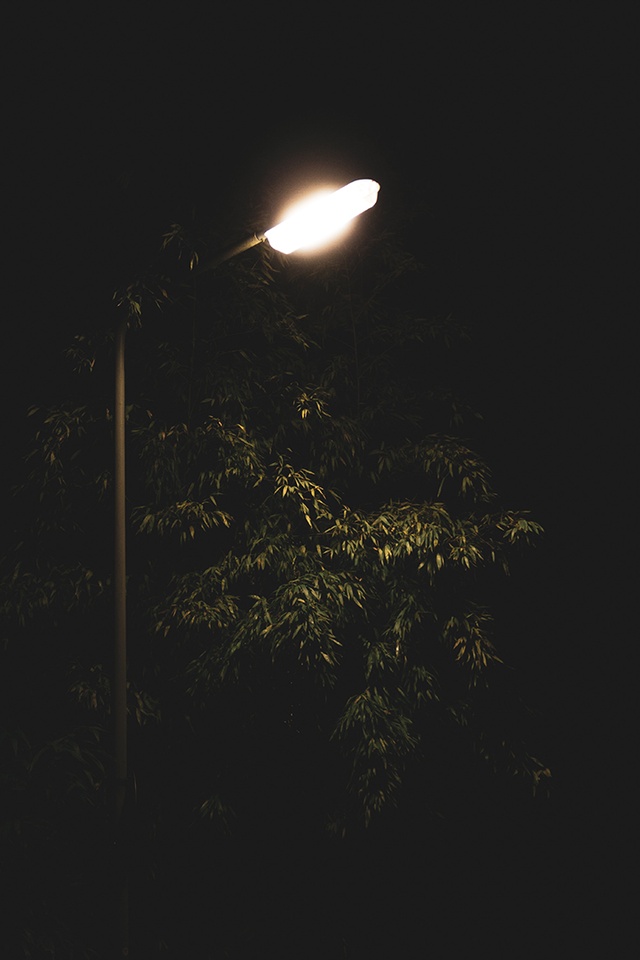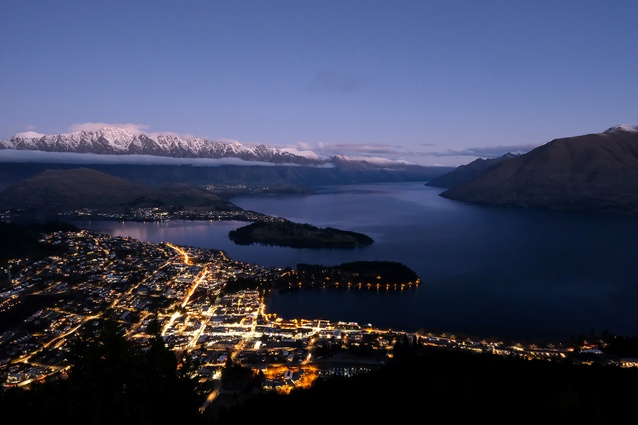Ecologist’s perspective: Lighting our environment
Lighting our environment may have more influence on fauna than we often consider, says Boffa Miskell ecologist Jessica Schofield. Do artificial lights guide our way, shining in the darkness, or do they cause unintentional pollution? Or both?
The concept that artificial light causes pollution may be a somewhat confusing notion; however, it is not a new concern. The way we choose to light our landscape, and the types of lights we use to do it, can have a substantial influence on our ecosystems.
Artificial light pollution is the unwanted presence, or inappropriate use, of artificial lighting: such as from streetlights, homes, and businesses. Dr. Christopher Kyba from the German Research Centre explains, “Near cities, cloudy skies are now hundreds, or even thousands of times brighter than they were 200 years ago. We are only beginning to learn what a drastic effect this has had on nocturnal ecology.”
“Near cities, cloudy skies are now hundreds, or even thousands of times brighter than they were 200 years ago. We are only beginning to learn what a drastic effect this has had on nocturnal ecology.”
-Dr. Christopher Kyba
Artificial lights can disrupt the natural patterns of ecosystems and nocturnally active species, resulting in wide-ranging effects; such as influencing plant growth, plant and animal reproduction, animal predatory and foraging behaviours, and migration. Imagine what it would be like if the lights were never turned off inside our homes. Dr. Kyba states, “The introduction of artificial light probably represents the most drastic change human beings have made to their environment.”
But we need lighting for safety and amenity at night, right?
In 2002, American researchers Travis Longcore and Catherine Rich organized the first conference on the ecological consequences of artificial light at night and published a textbook soon after, discussing some of the most well-known effects of light pollution on animals. For example, beachfront lighting disrupts the dark silhouettes of dune vegetation, removing this directional cue and resulting in disorientation of sea turtle hatchlings heading towards the ocean after emerging from nests on sandy beaches. Nocturnally migrating birds can become “trapped” via disorientation in artificially lit zones at night.
On the flip side, exploiting the responses of animals to light have been used to attract migrating freshwater fish species to fish ladders to bypass otherwise impassable dams and power plants; lighting of peri-urban areas has been used to deter mountain lions from entering residential areas; hooded and downward-facing lights are used on coastal roads and paths to reduce light spill into the coastal marine area, and avoid or minimise disturbance to coastal bird assemblages.
A move from warm to cool streetlights in Aotearoa
With the move to reduce energy consumption and costs, an increasing number of cities and towns around New Zealand have converted, or are working towards converting, their streetlights from high-pressure sodium (HPS) lamps to light-emitting diodes (LEDs). This results in a shift from the warm light HPS lamps produce, to cool light from LEDs. What does this mean?
“To reduce energy consumption and costs, cities and towns around New Zealand have converted their streetlights from HPS lamps to LEDs. …This results in a shift from the warm light HPS lamps produce, to cool light from LEDs.”
Warm lights (like HPS lamps) have a slightly yellow tone and emit less UV and blue wavelength, compared to the cool, blue-white light from most LEDs. Significantly, the colour temperature of LEDs can vary between 2700 K (no blue light) to 7000 K (a large proportion of blue light emitted). Many of the new LED streetlights being installed are 4000 K .
The effect of blue light emitted by LEDs is an emerging area of research in New Zealand and the world. Energy-efficient LEDs save money and are more sustainable but there are diverging outcomes since they don’t necessarily benefit our natural environments.

Lighting is hurting our native, migratory and introduced birds
In New Zealand, migratory seabirds can be particularly vulnerable to artificial light pollution. In 2020, British newspaper The Guardian reported about Westland petrel fledglings in Punakaiki becoming confused and crash landing on the road rather than out at sea. It is thought that this may be due to petrels confusing the blue tinge of the LED lights with the bioluminescent fish they feed on in the sea; and “diving” in response. The local transport authority agreed to switching off 15 streetlights over a 3.4 km stretch of highway near the sea, and there’s evidence to suggest that this reduced the number of Westland petrels found crash-landed on the road that year.
“Each year, hundreds of birds “fallout” within brightly lit areas of Kaikōura township. Survival rates are high, not due to changes in lighting, but because of a huge rescue effort from residents…”
There was similar concern with Hutton’s shearwater birds — an endangered species with just a few breeding grounds in the peaks of the Kaikōura ranges. In late summer, fledgling shearwaters leave the nest on their maiden voyage to Australia. Each year, hundreds of birds “fallout” within brightly lit areas of Kaikōura township. Survival rates are high, not due to changes in lighting, but because of a huge rescue effort from residents and volunteers to ensure fledglings are not run over, eaten by dogs or cats, or die from starvation. The Hutton’s Shearwater Trust is calling for lights to be changed toward more of the yellow end of the spectrum and as low intensity as possible.
Freshwater insects, particularly in their winged adult form, are vulnerable, too. Many species are attracted to bright lights near rivers and streams where they lay their eggs. This can disorientate them or result in large numbers congregating near lights, leading to increased mortality and a decline in local populations. Light reflection on some dark surfaces, like roads, can appear like water to freshwater insects and they may lay their eggs on it. Scientists at NIWA have been investigating the effects of LED lights on adult freshwater insects, and preliminary results suggest that low colour temperatures or yellow filters placed over LED lights may mitigate the blue-white light emitted and be less attractive to insects.
“The potential impact on birds, bats, and freshwater insects highlights the need for more effective measures to reduce ecological light pollution. There are many options that could be included in plans for housing and infrastructure…”
Bats are also affected by light pollution. DOC science adviser Kerry Borkin says, “although bats are nocturnal and use echolocation as their primary way of navigating, they have good vision and are very sensitive to certain kinds of light”. Artificial lighting can disrupt emergence times and movement across the landscape; as well as feeding patterns – bats are insectivorous, and insects are strongly influenced by artificial light. Bats often use linear features such as tree lines and waterways and these flightlines can be easily fragmented by lights.

The potential impact on birds, bats, and freshwater insects highlights the need for more effective measures to reduce ecological light pollution. There are many options that could be included in plans for housing and infrastructure: dimming lights, using motion-sensors, or turning lights off altogether during critical periods. Downward-facing shields can be installed over existing lights, or incorporated into new designs, to increase light directionality. The broad solution is a sensitive, considered lighting design appropriate to each project’s ecological environment.
There is no nationwide guidance in New Zealand related to artificial outdoor lighting design, but in France legislation is focused on controlling light glare and directionality, restricting allowable illumination levels and blue light emission.
There is no nationwide guidance in New Zealand related to artificial outdoor lighting design, but in France legislation is focused on controlling light glare and directionality, restricting allowable illumination levels and blue light emission. This requires monitoring of brightness in certain areas and prohibits lighting near waterways.
Perhaps New Zealand should follow suit; but can we have one-size-fits-all when it comes to lighting? We know that species are differently affected, so possibly not. However, the technology is available to make substantial improvements through careful planning and decision-making. The development of lighting guidelines that could be regionally adapted be would useful. More research is needed to understand how colour temperatures affect species, but evidence of adverse effects is mounting – should we be bold and avoid using cool, blue LED lights altogether, especially around ecologically sensitive areas?
There have been many calls for artificial lighting to be altered in certain places in New Zealand, but implementation has been very limited. It is time for ecologically-appropriate lighting choices to be a central consideration in any project.










